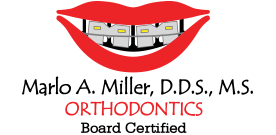How to Prepare for Your First Visit to an Orthodontist in Oklahoma City
Visiting an orthodontist for the first time can stir up a mix of excitement and nerves, especially when navigating unfamiliar paperwork, medical histories, and clinical rooms. By knowing what to expect and how to prepare, patients can transform that initial appointment into a confident step toward a healthier, straighter smile. For families relocating to or already residing in the heart of Oklahoma, this guide offers a roadmap to ensure your first encounter with an orthodontist is smooth, informative, and empowering. With clear explanations of clinical protocols, practical preparation tips, and a deep dive into treatment choices, readers will feel equipped to make informed decisions and set realistic goals for their orthodontic journey.
Why visit an orthodontist oklahoma city ok for your first appointment?
orthodontist oklahoma city ok practices combine specialized training in tooth alignment with advanced diagnostic tools to assess jaw structure, dental arch form, and bite relationships. This initial consultation is less about immediate treatment and more about comprehensive evaluation—X-rays, photographs, digital scans, and a full review of medical history create the foundation for a personalized care plan. By engaging with the treatment team at this stage, patients and caregivers gain clarity on timelines, investment, comfort expectations, and the sequence of visits that lie ahead. Establishing rapport and trust with the orthodontic staff from day one ensures patients feel heard, understood, and confident that each step aligns with their oral health goals.
H3: Pre-appointment Organization
At least a week before the scheduled visit, patients should gather any existing dental records, referrals from general dentists, and detailed insurance information. If prior orthodontic consultations or X-rays exist, scanning or requesting copies helps prevent redundant imaging and can even reduce out-of-pocket expenses. It is also beneficial to download, print, or fill out new patient forms online if the clinic provides that option; arriving early with paperwork complete frees up more time for discussion with the orthodontist rather than administrative tasks. Health history questionnaires can vary in depth, covering allergies, medications, and past surgeries, so taking time to answer thoughtfully can streamline the appointment.
H3: Initial Examination Protocols
Once seated in the clinical chair, the orthodontist will start with a detailed oral examination. Using intraoral mirrors and bright LED illumination, they assess tooth alignment, gum health, and bite contact patterns. Digital radiographs or cone-beam CT scans then capture panoramic views of roots, jaw joints, and bone structure—critical for identifying impacted teeth, asymmetries, or hidden periodontal concerns. Modern practices often supplement X-rays with facial and intraoral photographs to document facial proportions and smile lines, establishing a visual record that guides both aesthetic and functional treatment planning.
H3: Treatment Discussion and Planning
Following data collection, the orthodontist sits down with the patient or parent to explain findings in layperson’s terms. This conversation explores tooth crowding, spacing, crossbites, overbites, or underbites and lays out possible interventions—traditional braces, clear aligners, or specialized appliances for jaw growth modification. The proposed treatment timeline, which typically ranges from one to three years based on case complexity, is mapped out alongside an investment breakdown. Transparent practices outline insurance coverage, payment plans, and any third-party financing, enabling families to choose solutions that fit their budget without unexpected surprises.
How to prepare for your initial ortho appointment OKC
Preparation for an initial ortho appointment OKC involves more than just filling out forms; patients should develop a clear list of questions to ask, ranging from dietary restrictions with braces to estimated visit frequency. Bringing a written log of any jaw discomfort, headaches, or speech issues can help the orthodontist diagnose functional concerns beyond tooth position. Good oral hygiene on appointment day ensures clear visibility during examination and prevents delays due to required cleanings. Comfort is key—wearing loose-fitting clothes and scheduling the visit at a time when rushing is unlikely allows for a relaxed and focused consultation.
H3: Assembling Your Question List
Patients often hesitate to ask questions in a medical setting, but framing concerns beforehand encourages open dialogue. Typical queries include: What changes will I notice in daily life with braces or aligners? How often will adjustments or aligner deliveries occur? What emergency repairs (broken brackets, lost trays) does the office handle, and is there an after-hours line? Recording these questions in a notebook or smartphone note app creates a reference that ensures nothing is forgotten when nerves kick in.
H3: Gathering Dental and Medical Records
An accurate, chronological account of past dental treatments informs current recommendations. If wisdom teeth have been removed, or if a patient is undergoing active periodontal therapy, the orthodontist must know to modify treatment sequences accordingly. For younger patients in mixed dentition, records showing the timing of baby-to-adult tooth transitions help the orthodontist project future space requirements. A well-organized binder or digital folder with labeled PDF files of X-rays and notes from general dentists saves valuable chair time.
H3: Insurance Verification and Financial Planning
Orthodontic coverage often differs from standard dental plans, with many insurers capping lifetime benefits for braces or aligners. Verifying policy details well in advance prevents misunderstandings when payment is due. Some practices partner with healthcare financing platforms that spread costs over monthly installments with minimal or zero interest. Others offer sibling discounts for families with concomitant treatments or seasonal promotions that reduce initial down payments. Knowing these options before the first visit ensures patients select a plan that balances comfort, quality of care, and financial feasibility.
What to expect orthodontist OKC on appointment day
A first visit to an orthodontist OKC typically begins with a warm greeting from front-desk personnel and a quick tour of the office, including sterilization protocols and imaging suites. Patients proceed to a private consult room to confirm personal details and review any electronic forms. Shortly afterward, they enter the clinical bay for an introductory exam, usually lasting 45 to 60 minutes, depending on case complexity and the depth of discussion. The team often offers a guided walk-through of the digital treatment software, showcasing 3D simulations of tooth movement and projected before-and-after outcome renderings to illustrate the transformative potential of orthodontic therapy.
H3: Office Tour and Sterilization Standards
Infection control remains a pillar of modern orthodontic practice, with each operatory suite featuring HEPA-filtered air circulation and single-use accessories for procedures like impressions. Clinics will demonstrate autoclave sterilization and often allow patients to witness staff wearing appropriate personal protective equipment, reinforcing safety protocols. This transparency builds trust, reassuring patients that every tool and surface is hygienically maintained.
H3: Diagnostic Imaging Walk-through
Safety-conscious orthodontists employ low-dose digital radiography and, when indicated, cone-beam CT scans. Patients see how panoramic X-rays capture both dental arches in a single sweep, while bitewing images reveal hidden interproximal decay or bone levels. Intraoral cameras transmit high-resolution photos directly to chairside monitors, enabling real-time discussions of enamel health or minor chips that might require restorative care before orthodontic brackets or aligners are placed.
H3: Interactive Treatment Simulation
Leading practices integrate specialized software that digitally models tooth movement step by step. Patients can review simulation videos illustrating how brackets and wires or custom aligner sequences nudge each tooth into the intended position. Some offices even offer virtual reality headsets for an immersive preview of their future smile, heightening engagement and setting clear expectations for treatment milestones.
Orthodontist first visit tips
When stepping into an orthodontic clinic for the first time, adopting a few strategic habits can elevate the overall experience. Arriving five to ten minutes early enables a calm transition from daily routines to the clinical environment. Ensuring mobile phones are on silent and questions are at the ready fosters an undistracted conversation with the orthodontist. If traveling with children, parents should bring a small comfort item—such as a favorite toy or headphones—to ease any anxiety. Finally, maintaining a positive mindset by envisioning the long-term benefits of treatment helps patients stay motivated from day one.
A brief discussion with the front-desk coordinator about parking, wheelchair access, or public transportation options in central Oklahoma City can reduce travel-related stress. Patients should confirm appointment durations and any required pre-visit rinses or dietary restrictions, ensuring they neither arrive too hungry nor with residual lunch that could mask mild dental discomfort. Bringing a list of current medications and known allergies, including latex or shellfish (common components of gloves and dental materials), allows the orthodontist to adjust protocols for individual safety.
Understanding your treatment options in Oklahoma City
Choosing between traditional braces, ceramic braces, lingual brackets, or clear aligners can feel overwhelming without clear comparisons and honest insights. Below is a side-by-side overview of common orthodontic modalities to help frame expectations and guide decisions.
| Feature | Traditional Metal Braces | Ceramic Braces | Clear Aligners |
| Visibility | High (metal brackets and wires) | Moderate (tooth-colored) | Low (nearly invisible) |
| Comfort | Initial soreness, wires adjust | Less bulky than metal | Smooth trays, minimal irritation |
| Treatment range | Complex cases, severe rotations | Moderate to complex | Mild to moderate corrections |
| Oral hygiene impact | Brushing around wires required | Similar to metal braces | Remove to brush and floss easily |
| Dietary restrictions | Sticky/chewy foods restricted | Same as metal braces | No restrictions when removed |
| Appointment frequency | Every 4–6 weeks | Every 4–6 weeks | Every 8–12 weeks (tray changes) |
| Estimated cost (OKC market) | $3,000–$6,000 | $4,000–$7,000 | $4,500–$8,000 |
In a mid-treatment update, experienced clinicians often highlight the psychological boost patients feel when transitioning from metal brackets to a retainer or final aligner sequence, underscoring the importance of clear visualization of each phase’s role in the big picture.
A paragraph on clear aligner benefits naturally leads to mentions of Invisalign Aligner as a trademark example of removable, transparent trays that empower patients to maintain normal dietary and oral hygiene routines. Another section dedicated to metal versus plastic highlights the comparative durability and strength of wire-and-bracket systems, which is where a link to Invisalign vs Braces can guide readers toward more in-depth internal resources.
Insights on regional orthodontic practices
Oklahoma City’s diverse neighborhoods, from Bricktown to Nichols Hills, host clinics specializing in everything from early interceptive care for children to orthodontic solutions for adults and seniors. For families residing in bordering communities or commuting from nearby suburbs, having knowledge of an Orthodontist in Yukon can provide added convenience and flexibility when scheduling regular adjustment appointments. Coordinating visits between pediatric dentistry and orthodontics often simplifies logistics for busy households.
Additionally, clinics offering a full suite of Orthodontic Services—including jaw surgery coordination, sleep apnea appliances, and early intervention devices—address broader health concerns rather than solely focusing on tooth straightening. This multidisciplinary collaboration between orthodontists, oral surgeons, and general dentists ensures that complex bite discrepancies receive comprehensive care under one roof.
Choosing the right orthodontist in Oklahoma
When selecting an orthodontic provider, patients should look beyond office decor and marketing to evaluate professional credentials, patient reviews, and treatment philosophies. A consultation with a board-certified orthodontist guarantees at least two additional years of specialized residency training beyond dental school. Accreditation by the American Association of Orthodontists further confirms adherence to the latest clinical protocols and ethical standards.
During the search process, leveraging a resource like Choosing Right Orthodontist in Oklahoma—a guide that compares credentials, technology, and patient satisfaction metrics—empowers prospective patients to make data-driven decisions. It’s advisable to schedule brief meet-and-greet calls or virtual tours, which often reveal practice culture, staff friendliness, and office organization.
Long-term maintenance and retainers
After active treatment, retaining the newly aligned smile becomes the focus. Orthodontists frequently recommend fixed lingual wires cemented behind the front teeth or removable clear retainers worn full time initially and then nightly. Patients benefit from prompt retainer replacements at the first sign of distortion, as untreated gaps or rotations can recur within weeks.
A retention schedule is outlined before debonding or final tray delivery, including periodic check-in visits—typically at three, six, and twelve months post-treatment. Staff may offer digital scans to fabricate replacement retainers swiftly without additional physical impressions. This attention to detail ensures that the investment in time and resources yields enduring results.
What to look for in follow-up care
Regular follow-up visits are crucial to monitor retainer wear and ensure no new issues arise as the patient’s jaw and facial features mature. For younger patients still experiencing growth spurts, an orthodontist may adjust retainer protocols or recommend minor refinements if mild shifts occur. Adults, whose bone structure is less prone to significant change, still benefit from long-term surveillance, especially those with historical periodontal concerns.
Open communication with the orthodontic team about lifestyle changes—such as starting contact sports or new oral appliances—enables the office to tailor retention strategies accordingly. It’s advisable to keep a travel-sized retainer case on hand and maintain routine cleaning guidelines to prevent bacterial buildup.
Conclusion
Preparing for a first visit to an orthodontist in Oklahoma City can be a seamless process when patients understand the steps involved, from pre-appointment organization through treatment selection and long-term retention. By partnering with a trusted provider—one who offers transparent fee schedules, state-of-the-art diagnostic technology, and personalized care plans—patients embark on a transformative journey towards optimal oral function and an aligned, confident smile. orthodontist oklahoma city ok expertise ensures every aspect of this pathway is guided by clinical excellence, compassionate communication, and a commitment to lasting results. For those seeking premier orthodontic care, Marlo A. Miller, DDS, MS Orthodontics stands ready to support each patient with tailored solutions and exceptional service.
Frequently Asked Questions
1. What should I bring to my first orthodontist appointment?
New patients should arrive with previous dental records, X-rays, insurance information, a completed health history form, and a list of personal treatment goals or concerns. This preparation minimizes administrative delays and allows the orthodontist to focus quickly on clinical assessment.
2. How long does an initial ortho appointment OKC usually last?
Most first visits range from 45 minutes to one hour. The duration includes paperwork review, a comprehensive oral exam, diagnostic imaging, and an in-depth treatment discussion. Longer consultations may occur for complex cases or when additional family members need to participate.
3. Are there any dietary restrictions before my first visit?
No strict dietary limits apply before the consultation itself, though eating lightly is recommended to prevent discomfort during oral exams. After braces placement or aligner insertion, patients will receive clear guidelines to avoid sticky, hard, or excessively crunchy foods.
4. Will the first visit include any actual treatment, like braces?
Typically, the first visit focuses on evaluation and planning rather than active therapy. Brackets are rarely placed, and aligner trays are not ordered until after thorough analysis, ensuring each step aligns precisely with the individualized treatment blueprint.
5. How important is retainer wear after completing orthodontic treatment?
Retention is critical to maintain results. Without prescribed retainer wear—whether fixed or removable—teeth have a natural tendency to shift back toward their original positions. Adhering to the orthodontist’s retention schedule is essential for a stable, lifelong smile.




